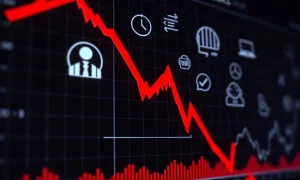Federal Reserve Chair Jerome Powell, former President Donald Trump, and investment strategist Keith Bessent share a concerning secret about monetary policy. Meanwhile, gold and bitcoin investors remain unaware of the $863 billion reality shaping their investments. This revelation fundamentally changes how we understand these alternative assets.
The Monetary Policy Impact on Gold and Bitcoin
Central bank decisions directly influence gold and bitcoin valuations. Quantitative easing programs inject massive liquidity into markets. Consequently, investors seek inflation hedges like precious metals and cryptocurrencies. The Federal Reserve’s balance sheet expansion creates this domino effect.
$863 Billion: The Hidden Number
This staggering figure represents undisclosed monetary expansion. Furthermore, it reflects unannounced liquidity injections. These actions devalue traditional currencies significantly. Therefore, gold and bitcoin become natural beneficiaries. Investors increasingly recognize this relationship.
Why Leaders Avoid This Discussion
Political and financial leaders avoid this topic for several reasons:
- Market stability concerns – Open discussion might trigger volatility
- Currency confidence – Admitting currency devaluation risks undermines trust
- Political implications – Monetary policy transparency has electoral consequences
- Institutional resistance – Traditional financial systems resist alternative assets
Historical Precedent for Gold and Bitcoin
Historical data shows consistent patterns. Monetary expansion consistently boosts gold prices. Similarly, bitcoin responds to liquidity injections. The 2008 financial crisis demonstrated this clearly. Current policies mirror those previous conditions.
Investment Implications Today
Smart investors now position themselves accordingly. They understand the gold and bitcoin connection to monetary policy. Portfolio allocations increasingly include both assets. This strategy protects against currency devaluation. However, volatility remains a consideration.
Future Outlook for Both Assets
Ongoing monetary policies suggest continued strength for gold and bitcoin. Central banks show no signs of reversing course. Therefore, the fundamental case remains intact. Investors should monitor Federal Reserve announcements closely. Policy shifts could signal changes ahead.
Frequently Asked Questions
Why do gold and bitcoin rise during monetary expansion?
Both assets serve as hedges against currency devaluation. When central banks increase money supply, investors seek stores of value.
How does the $863 billion figure affect everyday investors?
This liquidity impacts all currency holders through potential inflation, making alternative assets more attractive.
Should investors choose gold or bitcoin?
Many experts recommend diversification across both assets rather than choosing one exclusively.
How can investors track monetary policy changes?
Monitoring Federal Reserve meetings, balance sheet reports, and official statements provides crucial information.
What risks do gold and bitcoin investors face?
Both assets experience volatility, regulatory changes, and technological risks that require careful consideration.
How long has this relationship between monetary policy and alternative assets existed?
Gold has served as a monetary hedge for centuries, while bitcoin’s correlation emerged following its creation in 2009.
























